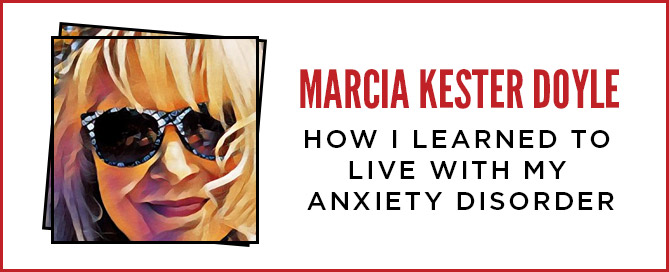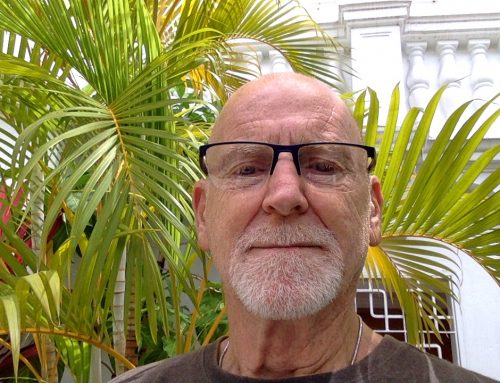HOW I LEARNED TO LIVE WITH MY ANXIETY DISORDER
I’ve been battling anxiety since I was young. Like many children, I was terrified of the dark and unable to sleep unless the closet light was left on. But during my early school years, my anxiety manifested into a deep fear of traveling to unfamiliar places and getting lost; of being set in social situations that required talking to strangers, and of any changes in my daily routine. My parents didn’t understand these anxieties any better than I did, and assumed it was due to a lack of maturity on my part. They believed that the best way for me to overcome my childhood fears was to put me in situations that challenged my comfort zone. This meant walking to the nearby school by myself, learning to sleep in the dark, using a public restroom by myself, and being forced to interact with other children in afterschool activities. I spent years living in dread and fear of what the next day would bring. My parents meant well, but in the end, their honest intentions to help me adapt to the daily challenges of life only reinforced my anxieties.
The fears that were rooted in my early childhood had a negative impact on my life once I became an adult. Every time I got behind the wheel of my car, I was terrified of being in a fatal accident. It was the same with flying—-I was convinced that the plane would crash, and as a result, I stopped flying.
At first, it was easy to hide my anxieties. I had a million excuses to avoid travel whenever friends or family members invited me on a trip: it was too expensive, the timing was bad, or I was too busy with work. If a friend called to invite me out to lunch, or if my boss needed to me to run an errand, I had even more excuses ready: my car was in the shop, I felt too sick, I had a dental appointment…….the list went on and on. I was too ashamed to tell anyone other than my husband that my anxieties had reached a point of crippling my ability to perform simple tasks such as grocery shopping, running to the drugstore, putting gas in my car or driving on the highway. I only drove to destinations near my home on roads that I was familiar with. If I needed to go some place new, my husband had to take me. I pulled him down the rabbit hole of my debilitating anxieties, and it wasn’t long before he too, was making excuses for my behavior not only to himself, but to others.
I couldn’t hide my anxiety forever, especially once my children became older and had active social lives that required transportation to sleepovers, choir practice, dance, and gymnastics. If I had advance notice from them, I could plan ahead by having my husband drive the route with me a day or two before so that I’d know how to find the addresses without getting lost. He looked for the easiest roads for me to drive, even when it meant traveling ten minutes out of my way to stay on the back roads instead of the highways. But if the kids were stranded at a friend’s house and needed a last minute ride home, or if one of our pets became sick and needed to see the vet immediately, my husband had to leave work in the middle of the day to run the errands that I was too anxious to handle. I felt guilty every time I asked for his help, even though he assured me it was fine. He didn’t complain about my neediness or the tremendous strain my anxieties were putting on our family, but there were times when I saw the frustration in his eyes. When he finally suggested that I speak to a doctor about my anxiety, I rejected the idea because I was too ashamed to admit that I was living a life consumed by fear.
As my children grew older, they noticed how little I drove them around—that I was completely dependent on their father—and how often I skipped out on school-related events. They were frustrated with what they perceived as laziness and my lack of involvement. I refused to share the truth about my anxiety disorder with them because of the stigma attached to it; I didn’t want them to see me as a helpless woman or a mother with a mental illness.
I lived this way for years, and it was exhausting to hide behind a facade that was meant to keep me from being viewed as abnormal by others. I’d already missed out on so many opportunities that would have enriched my life. Anxiety disorder prevented me from getting a better job, going back to school, attending important functions, vacationing with family, and from being the parent that my children deserved. I knew that if I didn’t seek professional help soon, I’d never learn the proper coping mechanisms for dealing with my mental illness.
But taking that first step toward wellness was terrifying.
My breaking point occurred the morning I was called in for jury duty. My husband drove me to the courthouse but was not allowed to accompany me through the jury selection process. Being forced to step out of my comfort zone that day dredged up my childhood emotions of terror at being left alone. Once my husband left, I felt the panic rising up inside me, squeezing my chest to the point that I had trouble breathing. I was certain that I was on the verge of a heart attack and locked myself in a bathroom stall to gain my composure. Listening to calming music on my phone helped buffer my anxiety and allowed me to block out the noise in the courthouse.
Fortunately, the case was dismissed before the jury was selected, and I was allowed to return home early. The next morning I met with my physician and broke down in her office. It was a relief to finally discuss my illness with someone, and together we decided on a treatment plan that included relaxation exercises, deep breathing, and medication for depression and anxiety.
The next step was to be honest with my family and friends about my anxiety disorder. Although some people felt that my husband was an enabler for allowing me to avoid challenging situations, the majority of them were supportive and pleased that I decided to seek professional help.
Living with anxiety disorder is an uphill struggle for both me and my family. It’s a slow process, and there are no simple “fixes”, but the exercise and medication is helping me take small steps toward living a normal life. I’m no longer ashamed of having a mental illness that has been with me since childhood. I didn’t ask for this condition, but it’s a part of who I am. In my adaptation process, I’m making peace with the shame and guilt that dogged me for years, and learning to be kinder to myself. I’m living my life in the fullest capacity that I can, and for today, that’s enough.
 Marcia Kester Doyle is the author of the humor book, “Who Stole My Spandex? Life In The Hot Flash Lane”, and the voice behind the midlife blog, “Menopausal Mother.” Her work has appeared in Cosmopolitan, Good Housekeeping, Woman’s day, House beautiful, Country Living, The Huffington Post, and Scary Mommy, among others. She lives in Florida with her husband, four children, and one feisty granddaughter.
Marcia Kester Doyle is the author of the humor book, “Who Stole My Spandex? Life In The Hot Flash Lane”, and the voice behind the midlife blog, “Menopausal Mother.” Her work has appeared in Cosmopolitan, Good Housekeeping, Woman’s day, House beautiful, Country Living, The Huffington Post, and Scary Mommy, among others. She lives in Florida with her husband, four children, and one feisty granddaughter.








Leave A Comment